 | ||
Yapt m telk rma tekni i
Tulle-bi-telli, also known as Assuit after Assuit where it is made, is a textile marrying cotton or linen mesh with small strips of metal, with its origins dating back to Ancient Egypt. Other spellings include assuite, asyut, assyut, asyute, and azute. The name translates roughly as "net with metal".
Contents
- Yapt m telk rma tekni i
- Belly dance falahi dance by nabaweya mostafa from rotana zaman
- Properties
- Production
- History
- Uses
- References
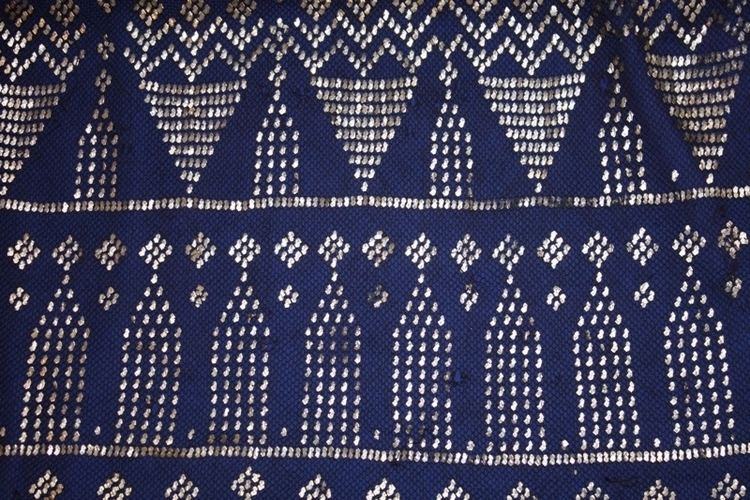
Belly dance falahi dance by nabaweya mostafa from rotana zaman
Properties
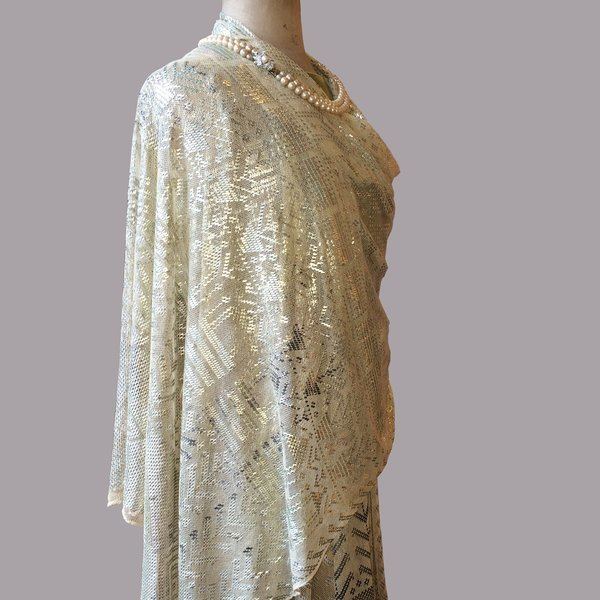
Assuit has great lateral elasticity, thanks to its openwork mesh, which closely resembles a double torchon. It is heavy, and retains heat, but is favoured for its ability to drape.
Production
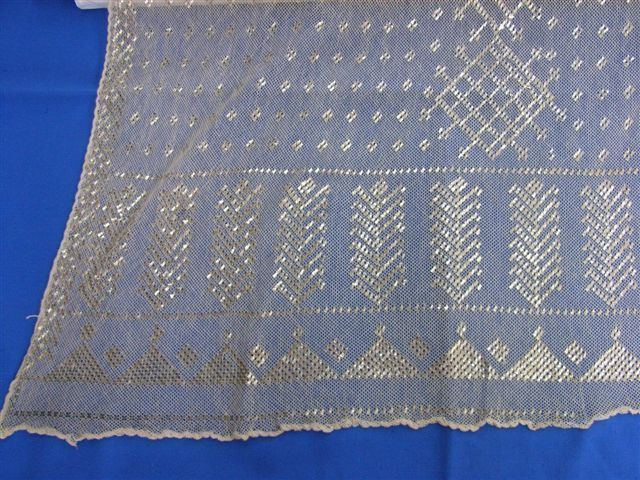
Thin strips of metal, such as copper wire, silver, pot metal, brass, chrome-plated base metals, or even 14-carat gold, are threaded onto a flat, wide needle with a flat, wide eye. Each strip is approximately 1/8" wide and 18" to 24" long. The strips are threaded into the mesh, criss-crossed, flattened with the fingernails, and cut. The fabric is then stamped down, and when the designs are finished, the fabric is passed through a roller to flatten the metal even more.
History
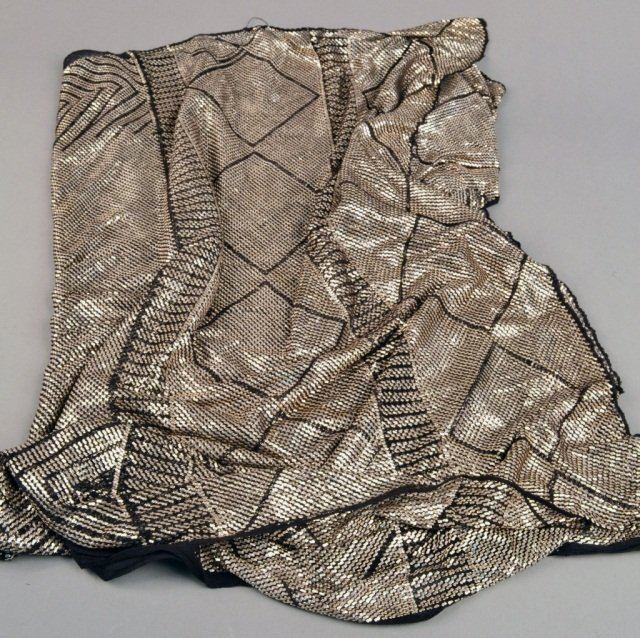
Textiles similar in concept to assuit date back to ancient times. Metal thread embroidery was used extensively throughout the Middle East, Asia, and parts of Europe. References are made to its use with Egyptian linen in the Bible. Also, 3,000‑year‑old specimens of netting made with flax are preserved in the Museum of Montbijou, Berlin. The hand-made net is of intricate design; each net composed of some 365 individual fibers. The dye techniques used were equally sophisticated; metallic salts to improve the fastness of dyes has been found in textiles in tombs dating from before 1500 BC. These early embroideries were done with the application of precious metals, especially gold. The pure metal was beaten into thin plates, divided into small slips which were rounded by a hammer, and then filed to form wire. Few remains of ancient wire work have been found. This net would certainly have qualified as "transparent", as shown on the tomb pictures.
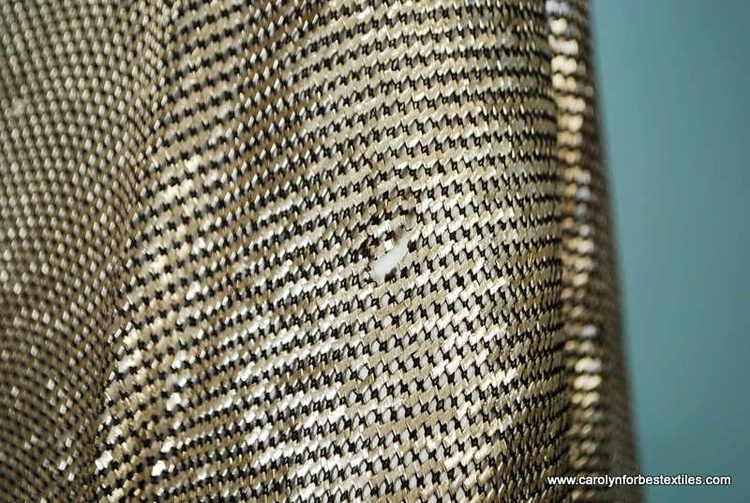
In 1893, Orientalism was very popular. "Belly dance" was introduced to the American public at the Chicago World Fair, and so was assuit. The fabric was sold as souvenirs on the Midway.
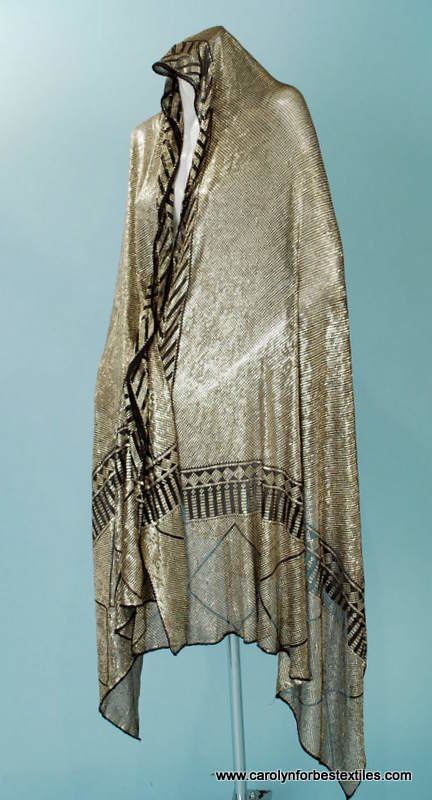
In 1922, King Tutankhamen's tomb was discovered, triggering another wave of Orientalism. All of a sudden, pretty much everything Egyptian was highly desirable. It influenced fashion, dance, and film.
Uses
Assuit has been used in Hollywood productions such as the lost Cecil B. DeMille opus Cleopatra. It was draped on Hedy Lamarr in Samson and Delilah. It is used extensively for dresses in old Egyptian musicals. It was also worn draped over the head, as wraps, and as wedding gowns. It can also be used for decoration: Piano shawls were extremely popular, and specimens can still be found occasionally in antique shops.
Shawls come in different sizes: most are long and narrow, and the designs vary, ranging from the simple to the elaborate. Some people believe designs have been passed down through families, as with weaving and embroidery work. Some designs appear to be intentionally left incomplete. Coptic Christian designs often have animal and human figures, whereas Muslim shawls rely on geometric designs. In some places, assuit shawls are known as Coptic shawls. The geometric designs were popular with the Art Deco movement, beginning around 1925.
The modern fabric seems to have first appeared in the late 19th century. The invention of the bobinet machine in Tulle, France in the early 19th century increased the popularity of a hexagonal mesh fabric and it became commonly known as tulle. A French entrepreneur built a small net factory in Upper Egypt to help stimulate depressed economy of the area, hoping to create a cottage industry relying on the specialist embroidery skills of those who lived in this region.
